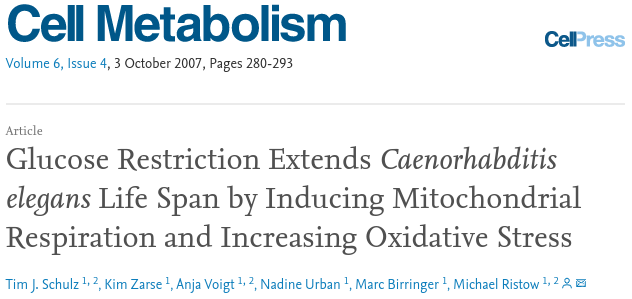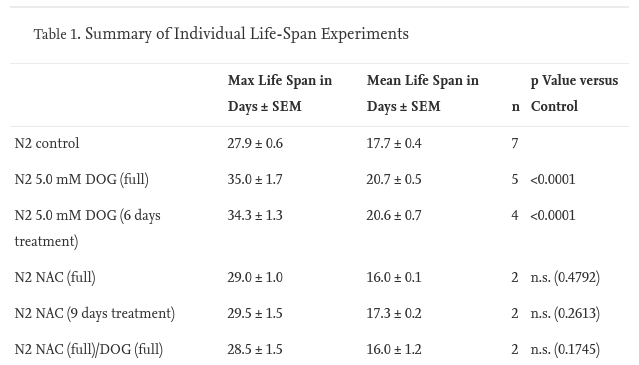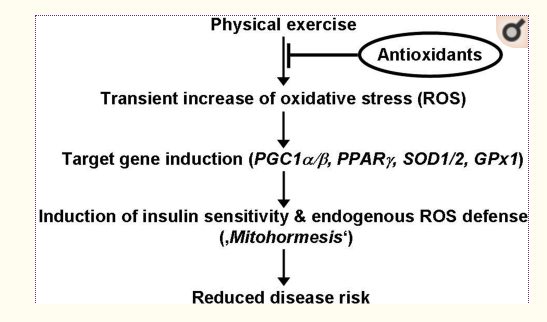If you’been reading through the Introduction to Fire in a Bottle series, I explained the concept of oxidation, discussed the oxygen catastrophe and its implications for evolution, I introduced our unlikely hero superoxide and then we met our bodies inbuilt antioxidant defense system.
Along the way I introduced the key point that Reactive Oxygen Species (ROS) are in important signalling molecule for all kinds of biological processes. This experiment is a great example of this. The experiment is done on the organism c. elegans, which is a nematode, a small worm often used as a model organism in experiments about basic science.

Here is the full text of the paper.
In the experiment, the investigators used a compound that blocks the worms’ ability to metabolize glucose. This forced the worms to burn fat rather than glucose. For reasons that will be the topic of a later series on this blog, running your metabolism on fat rather glucose causes more superoxide production in the mitochondria.
The worms who couldn’t metabolize glucose had three times the Reactive Oxygen Species and lived three days longer than the control worms. This may not sound like a long time but the control worms only lived about 18 days on average, so it’s a big difference!

The most interesting part is that by giving the worms an antioxidant the investigators totally eliminated the life extension that was created from inhibiting glucose metabolism. The worms given an antioxidant in addition to the glucose metabolism inhibitor had far less ROS in their tissues and lived the exact same amount of time as worms who could metabolize glucose. This proves that the ROS is what caused the worms to live longer and not just an artifact.

Photo: By Palhinha, L. – Own work, CC BY-SA 4.0, https://commons.wikimedia.org/w/index.php?curid=67749591
The other major finding in this experiment is that catalase activity in the worms given the glucose metabolism inhibitor was increased. Catalase is an important antioxidant in our cells. So the researchers found that the buildup of ROS in the worm tissues caused the worms to increase their internal antioxidant systems.
ROS is the signal that causes us to increase our internal antioxidant capacity!
Experiment 2, This Time with Humans!

In this experiment, men were broken into randomized groups and put into a exercise regimen for four weeks. One group received the antioxidant vitamin supplements Vitamin C and Vitamin E and the other group received nothing. At the end of the four weeks the two groups were tested for changes in their insulin sensitivity and production of antioxdant enzymes.
The group who didn’t take antioxidants improved their insulin sensitivity and increased antioxidant enzyme production as a result of the four weeks of training. The group who received the antioxidant supplements got no benefit from the exercise in either their insulin sensitivity or their production of antioxidant enzymes!
ROS is the signal!

We are fire in a bottle. Our biology is controlled by the fire. Antioxidants quench the fire.
The next post is the last in the Introduction to Fire in a Bottle. I’ll summarize the discussion to this point.
